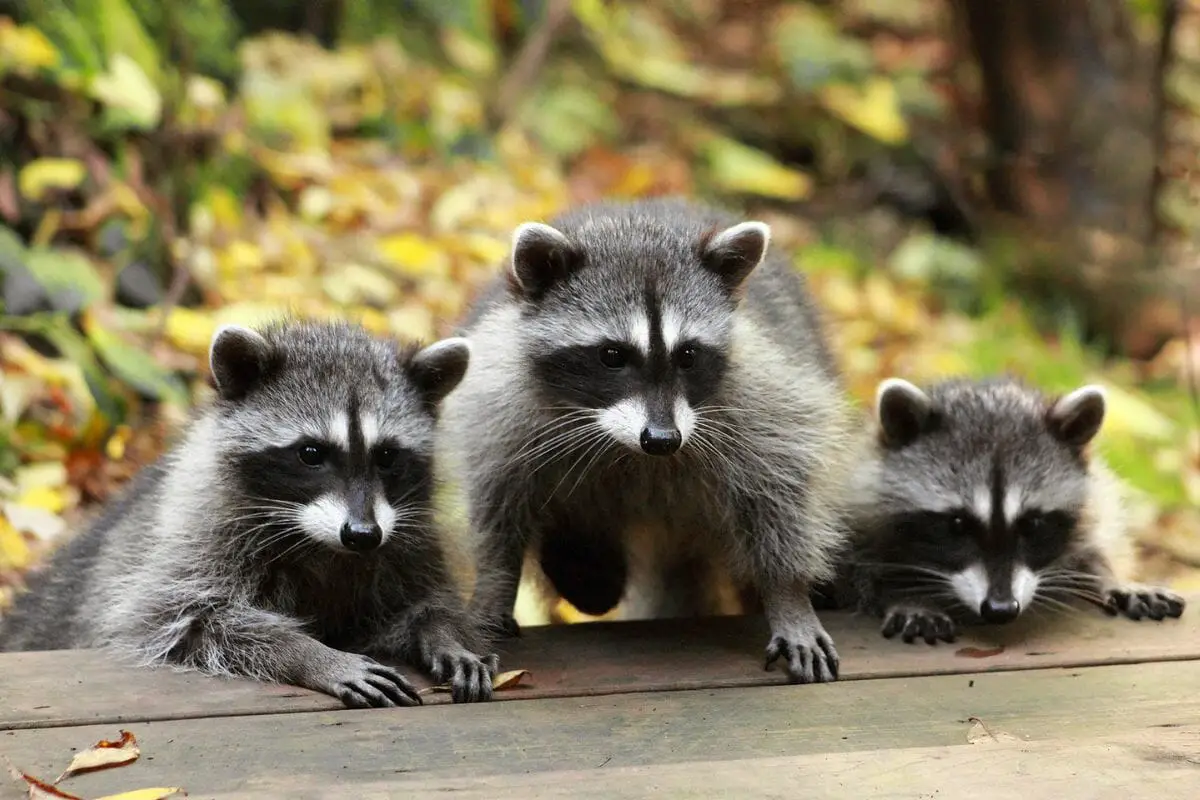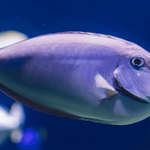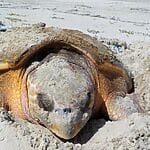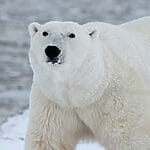There are many animals, like humans, who eat both plants and other animals to survive. These animals are called omnivores, and there are many of these creatures who have a varied diet.

Carnivores are animals that only eat meat, while herbivores are animals that only eat plants. Omnivores are those who get their energy from eating both meat and plants.
In this article, we’ll go into more depth about the different animals that are classed as omnivores.
Some of the animals on this list may surprise you, as some of these animals are known for either eating meat or may have been mistaken for herbivores.
1. Bears
Surprisingly, most bears are omnivores, so they will eat both meat and plants to survive. Due to the size of most bears such as grizzly bears and black bears, it would be assumed that they are carnivores.
However, bears also eat plants, fruits, and nuts. Along with these plants, they will also eat meat such as salmon and squirrels, and they are not above eating dead animals.
As scavengers, bears are happy to go through trash if it’s left at natural parks. That is why you should never leave your food unattended, especially if you have alcohol and avocados, as these are poisonous to them.
Instead of littering, you should always dispose of it in the bear-proof trash can in natural parks.
2. Pigs
Like the other animals on this list, you would assume that pigs are naturally herbivores who would eat grains and greens. However, pigs are happy to consume both plants and meats, and can eat almost anything.
Due to pigs eating almost everything, they will eat whatever you give them.
In some cases, pigs will eat the carcasses of other dead pigs, and may even consume their young. However, this kind of cannibalism doesn’t occur very often.
Generally, pigs (Also check out Types Of Pigs) need to be observed around their piglets as they are often at risk of accidentally crushing their piglets too.
3. Raccoons

No one will be surprised to find that raccoons are omnivores, and are known scavengers who have often been found rummaging through trash.
Generally, this is because raccoons aren’t the most skilled hunters, and so it tends to be easier for them to find things that can’t move.
If a raccoon is lucky, it can catch small rodents or mammals to eat, sometimes finding them nearby where they’re scavenging.
However, scavenging in the trash is more difficult for raccoons, as there are plenty of foods that are toxic and pose threat to their life.
4. Monkeys
Many people assume that monkeys will only eat bananas, but this isn’t true, and it sometimes depends on the type of monkey. Where they live, bananas are in abundance, however, they are also fans of eating insects and other fruits.
Many monkeys will eat fruits and nuts or eggs and lizards depending on the season they’re in. They will often eat fruit when it is ripe in January and May, while they may switch to meat and other proteins when it gets to fall and winter.
5. Apes
Much like monkeys, the ape is also considered to be a massive fan of bananas. However, they are also omnivores. Many apes enjoy eating meat, especially larger apes, and will have a varied diet of plants and other animals.
While they forage for any fruits and insects, apes will not oppose to hunting other smaller mammals for substantial protein source. They will often share the meat with one another, and some apes have also been known to make tools to help catch their prey to eat.
The only gorilla that may be mistaken for a herbivore is the gorilla, as it prefers a vegetarian diet. However, they will also consume insects such as termites, and have been known to break open the nests to consume their larvae.
6. Bearded Dragons
Many people believe that reptiles will only eat insects, but that isn’t true for the bearded dragon. These reptiles will eat both insects and vegetables, and they are known to be big fans of crickets and mealworms.
They will also eat a variety of leafy greens, and so will have a varied diet of both plants and animals. Mealworms are especially popular with bearded dragons due to the amount of proteins and vitamins within them.
7. Rats
Despite the misrepresentation of rats in the media, these rodents aren’t going to eat people. In fact, rats are known to have the diet of an omnivore, so they can eat vegetables and meat.
Generally, rats will scavenge for their food, and so it is through this misrepresentation that they are believed to be one of the dirtiest animals out there. However, they are actually known for being much cleaner than other animals and have a decent hygiene base.
The reason rats may be seen as being dirtier than others is because they are known to come across rotten corpses of other animals (see also: Animals That Look Like Rats)and eat them.
Contrary to popular belief however, they won’t actively hunt for meat, and will be happy to come across it to include more protein in their diet.
8. Dogs
No pet owner will be surprised to find that dogs are omnivores. While they weren’t always omnivores, they steadily evolved so that they could consume both plants and animals.
Most types of dog food are manufactured so that each piece is mixed with grains, meat, and vegetables. However, over the years they have adapted and can now eat vegetables due to the amylase enzyme, an essential substance for digesting plant material.
Amylase is an enzyme that secretes a protein via the pancreas and salivary glands, and they will convert complex carbohydrates into sugars.
Despite being omnivores, most dog owners are aware that dogs can’t eat everything. There are certain vegetables and other sugary foods that are toxic to them, and can even kill them.
9. Foxes

Contrary to popular belief, foxes aren’t carnivorous, and are in fact omnivores. They will consume both plants and animals, adhering to the science of their dietary needs as their regular habitat is in the forest.
Due to living in the forest, they not only hunt for prey in groups, but they will also forage for berries and other fruits.
Depending on the season, they will forage for different fruits, insects, vegetables, and other animals. When they hunt, despite being in groups, they will often compete with one another to get the best prey.
However, they may also hunt alone for base life sustenance hence the reason too.
10. Birds
There are many birds who are omnivores such as chickens, seagulls, and crows as some of the most distinct examples according to science. However, there are some birds that eat both plants and animals, and others exclusively consume plant matter.
Seagulls are omnivores because they are also scavengers, but they will also swipe fish from the sea when they are hunting.
Typically, seagulls find it easier to steal food instead of hunting, so they are often found loitering in the trash, and will often eat a variety of human foods.
Some omnivores like chickens have evolved in a way so that they can swallow their food whole. Due to that, they will consume smaller animals such as small lizards, snakes, and also mice.
Often in the wild north, you will find that chickens will scratch the soil to find seeds and insects to consume.
Ravens are also omnivores, but they are more opportunistic like seagulls. They will often eat eggs, berries, and small mammals. Yet they are not above scavenging from trash in a similar manner to seagulls.
11. Wasps
There are certain insects who are omnivores, with adult wasps being one of the most distinct omnivores. While they will feed on nectar from flowers, they will also hunt other insects and feed them to their larvae, who are carnivorous in nature.
However, not all wasps are omnivores. While some wasps will prefer to feed on fruit and nectar, other wasps may be interested in other dead insects.
As a rule though, most wasps as adults will prefer to feed on sugary nectars, and will only bring carrion back to their young.
12. Crickets
Unlike wasps who will prefer to bring chewed up meats back to their young, crickets are omnivorous scavengers, meaning they eat both plants and animals. Generally, crickets will attack any weakened prey from the worm family to even other crickets.
They will also eat dead insects if they are unable to scavenge for other food successfully. Overall, crickets seem to prefer eating fruit and seeds, but won’t hesitate to eat larger animals.
It should be noted however, that they will only eat meat when the opportunity presents itself. Generally, they prefer plants and seeds, and will only scavenge opportunistically.
Final Thoughts
There you have it all about animal that eats plants and animals. There are numerous omnivores in the animal kingdom, and these animals are much more likely to thrive. Generally, omnivores can hunt for food, but if they fail to hunt, they can have plants instead.
Carnivores are reliant on finding meat, and can starve if they don’t manage to scavenge some food. Herbivores have a similar issue, and may be at more risk of starvation if there are any issues with finding the right supplies.
If you want to know more about animal diets, then check out some of our other articles.
- What Should I Do If A Koala Bites Me? Safety Guide - 2024-05-30
- Are Kangaroos Born Without Hind Legs? A Fascinating Journey - 2024-05-30
- Animals That Look Like Squirrels - 2024-05-30









